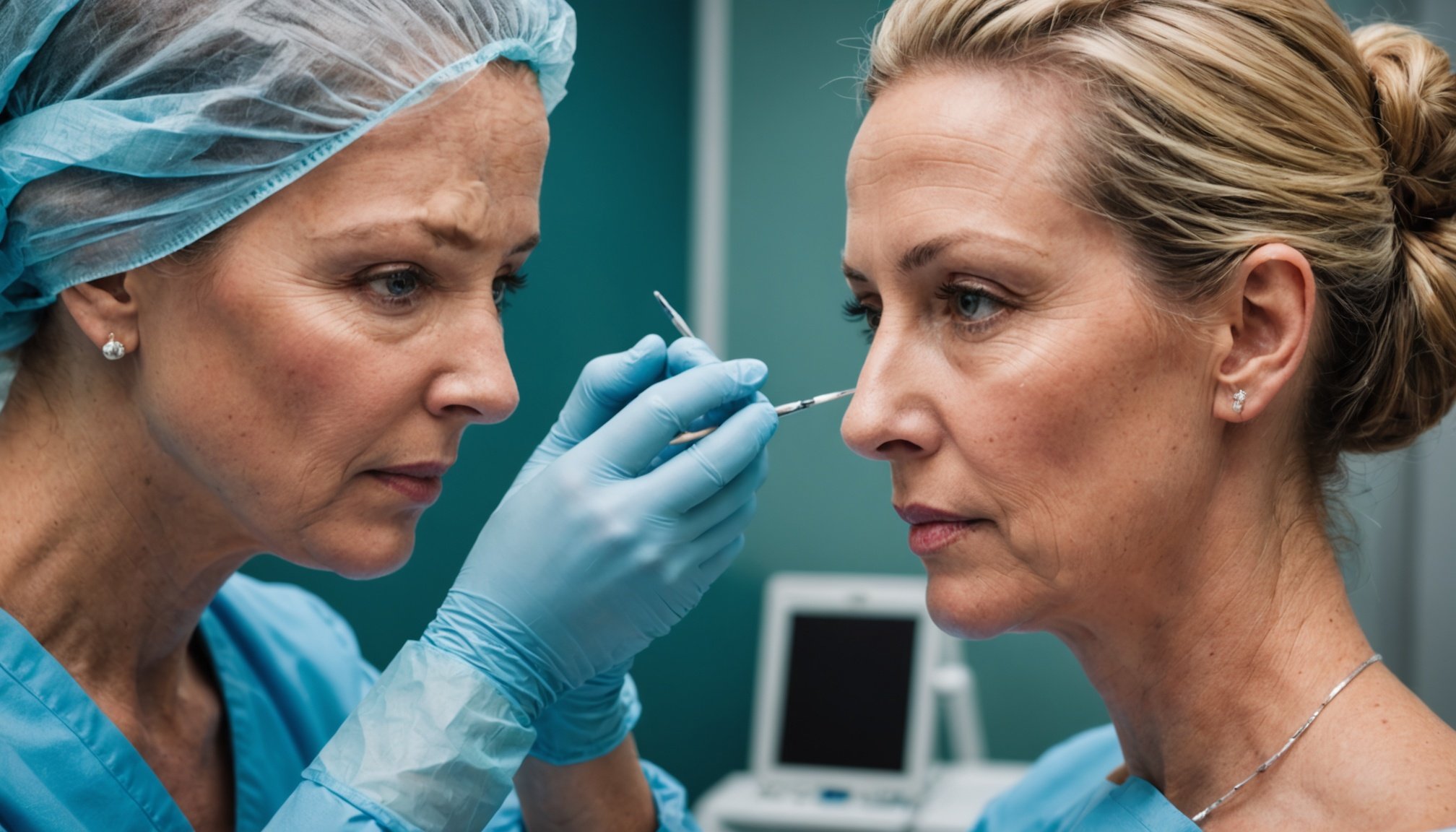Top Strategies for UK Plastic Surgeons in Mastectomy Reconstructive Surgery: Best Practices Revealed
Understanding the Landscape of Breast Reconstruction
Breast reconstruction after a mastectomy is a complex and highly personal process for women affected by breast cancer. The advancements in surgical techniques and materials have significantly expanded the options available, making it crucial for UK plastic surgeons to stay updated on the best practices.
Patient Selection and Counseling
The first and most critical step in breast reconstruction is the selection and counseling of patients. This involves a thorough evaluation of the patient’s overall health, the extent of the mastectomy, and the patient’s personal preferences and expectations.
Also to discover : Understanding the Vital Role of UK Emergency Medicine Experts in Handling Acute Psychiatric Emergencies
“Patient selection is key to the success of any breast reconstruction procedure,” notes Professor Kefah Mokbel, an internationally renowned breast cancer surgeon. “It’s essential to assess the quality of the mastectomy flaps, the risk factors, and the patient’s desires to determine the most appropriate technique”.
Here are some key factors to consider during patient selection:
Have you seen this : Essential Protocols for UK Occupational Therapists to Enhance Fine Motor Skill Recovery in Adults After a Stroke
- Health Status: Patients with certain health conditions, such as diabetes or smoking habits, may be at higher risk for complications.
- Mastectomy Type: The type of mastectomy performed (skin-sparing or nipple-sparing) can influence the reconstruction approach.
- Patient Preferences: Understanding the patient’s aesthetic goals and lifestyle can help in choosing the right reconstruction method.
- Risk Factors: Identifying potential risk factors such as high BMI or previous radiation therapy can guide the decision between single-stage or two-stage reconstruction.
Techniques in Breast Reconstruction
Breast reconstruction techniques have evolved significantly, offering patients a range of options tailored to their individual needs.
Single-Stage vs. Two-Stage Reconstruction
Breast reconstruction can be performed as either a single-stage or two-stage procedure.
-
Single-Stage Reconstruction: This involves placing the implant immediately after the mastectomy. It is often preferred in Europe due to its simplicity and reduced need for multiple surgeries. However, it requires high-quality mastectomy flaps and minimal risk factors.
-
Two-Stage Reconstruction: This is more commonly used in the USA and involves the placement of a tissue expander followed by the implant in a second surgery. This approach is generally safer if risk factors are identified and allows for routine fat grafting at the second stage.
Use of Meshes and ADMs
The use of acellular dermal matrices (ADMs) and synthetic meshes has become integral in prepectoral breast reconstruction.
- Types of Meshes: Various types of natural and synthetic meshes are available, each with its own set of properties. The ideal mesh should integrate well, provide support, and be cost-effective. Table 1 below outlines some key properties of meshes used in breast reconstruction:
| Property | Description |
|---|---|
| Material | Natural (e.g., Alloderm) or Synthetic (e.g., Vicryl) |
| Form | Flat sheet, contoured, or fenestrated |
| Integration | Ability to integrate with the body’s tissue |
| Support | Capacity to provide structural support to the implant |
| Cost-Effectiveness | Balance between cost and clinical outcomes |
Surgical Techniques and Considerations
The success of breast reconstruction surgery hinges on several surgical techniques and considerations.
Mastectomy Techniques
The mastectomy itself is a critical component of the reconstruction process. Here are some key points:
- Minimizing Diathermy and Retraction Injury: It is essential to avoid damage to the skin flaps to ensure optimal healing and integration of the implant.
- Preservation of Subcutaneous Layer: Maintaining the subcutaneous layer and its perforators is vital for the vascularization of the mastectomy flaps. This can be evaluated preoperatively using digital mammography or MRI.
- Incision Planning: Incisions should be planned to minimize interruption of subcutaneous vasculature. Incisions around the areola are considered high risk and should be avoided if possible.
Implant Placement and Coverage
- Prepectoral vs. Submuscular: Prepectoral implant placement is becoming increasingly popular due to its muscle-sparing nature and reduced morbidity. However, the decision between prepectoral and submuscular placement depends on the patient’s anatomy and preferences.
- Complete Coverage Technique: Ensuring complete coverage of the implant with well-vascularized tissue is crucial. This can be achieved by quilting the lateral wall from the axilla and reducing dead space inside the chest wall.
Postoperative Care and Outcomes
Effective postoperative care is essential for optimal outcomes in breast reconstruction.
Reducing Complications
- Seroma Formation: A snug implant coverage is believed to reduce the rate of seroma formation. Regular follow-up and monitoring for any signs of complications are vital.
- Wound Care: Proper wound care and monitoring for any signs of infection or flap necrosis are critical in the immediate postoperative period.
Patient Reported Outcomes
Patient-reported outcomes are increasingly important in evaluating the success of breast reconstruction.
- Quality of Life: Studies have shown that breast reconstruction can significantly improve the psychological and emotional well-being of women who have undergone mastectomy. Patients often report improved body image and quality of life.
- Decision Making: Involving patients in the decision-making process and providing them with comprehensive information about the different reconstruction options can lead to higher patient satisfaction and better outcomes.
Cost-Effectiveness and Health Care Considerations
Breast reconstruction is not only a medical necessity but also a significant financial consideration.
Health Care Costs
- Insurance Coverage: In the UK, breast reconstruction is typically covered by the NHS, but private insurance options are also available. Understanding the cost implications and insurance coverage is crucial for patients.
- Resource Allocation: Hospitals and health care providers must allocate resources effectively to ensure that breast reconstruction services are accessible and affordable for all patients.
Cost-Effectiveness Analysis
A cost-effectiveness analysis can help in determining the most viable reconstruction options.
- Comparative Studies: Studies comparing different reconstruction techniques can provide insights into their cost-effectiveness. For example, a study might compare the costs and outcomes of implant-based reconstruction versus autologous tissue reconstruction.
Real-Life Examples and Anecdotes
Real-life examples can provide valuable insights into the practical aspects of breast reconstruction.
Professor Kefah Mokbel’s Experience
Professor Kefah Mokbel, an internationally renowned breast cancer surgeon, has extensive experience in breast reconstruction. He emphasizes the importance of a multidisciplinary approach and patient-centered care.
“Each patient’s journey is unique, and it’s our duty as surgeons to ensure that we provide the best possible care tailored to their individual needs,” says Professor Mokbel. “From the initial consultation to the post-operative care, every step is crucial in achieving optimal outcomes”.
Patient Testimonials
Patient testimonials can offer a personal perspective on the breast reconstruction experience.
“I was worried about how I would look after my unilateral mastectomy, but I was extremely pleased with the outcome,” says one of Professor Mokbel’s patients. “The care and support provided by Professor Mokbel and his team were exceptional, and I couldn’t be more grateful”.
Practical Insights and Actionable Advice
Here are some practical insights and actionable advice for patients and surgeons:
For Patients:
- Educate Yourself: Understand the different reconstruction options available and their associated risks and benefits.
- Seek Second Opinions: Consult with multiple surgeons to find the best fit for your needs.
- Support System: Build a strong support system of family, friends, and healthcare professionals.
For Surgeons:
- Stay Updated: Continuously update your knowledge on the latest techniques and materials.
- Multidisciplinary Approach: Collaborate with other healthcare professionals to provide comprehensive care.
- Patient-Centered Care: Prioritize patient-centered care and involve patients in the decision-making process.
Breast reconstruction after a mastectomy is a complex and multifaceted process that requires careful planning, precise execution, and comprehensive postoperative care. By understanding the best practices, staying updated on the latest techniques, and prioritizing patient-centered care, UK plastic surgeons can provide optimal outcomes for their patients.
In the words of Professor Mokbel, “Breast reconstruction is not just about restoring the physical form; it’s about restoring hope and dignity to women who have faced the challenges of breast cancer.” By adhering to these strategies, surgeons can make a significant difference in the lives of their patients, enhancing their health, well-being, and overall quality of life.











